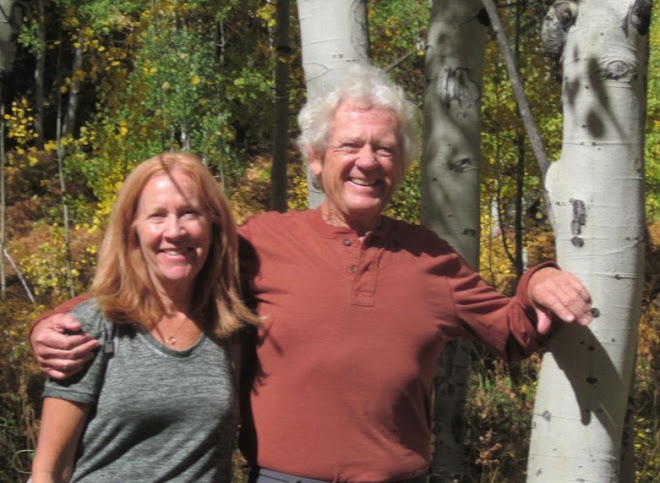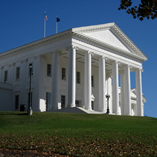Since 2011- 2015 is the sesquicentennial (150 years) of the U.S. Civil War, we decided to visit those sites and learn what we could. Many improvements have been made to explain the war in the fairly new Visitors Centers. They had films about the battles that occurred on each site which made the history come alive. We saw the actual battlefield sites with the interpretive signs as well as the graveyards with the thousands and thousands of markers. The National Park rangers are well-informed on the minutia of the War in their area and were available for any questions. Rather than trying to present a tutorial here on the well-documented Civil War, we want to just mention things that impressed us or what we learned that was new. So much of the background events leading to the war seem relevant today, with the divisive condition of our Congress and our country. In 1830-50, abolitionism was raging hotter and hotter and we learned about this in John Brown’s fervent crusade from the Adirondacks of New York to Harper’s Ferry in West Virginia. John Brown attacked the Harper’s Ferry arsenal with only a handful of men, and federal forces (led by Robert E. Lee) captured, tried, and hanged him. In New York we also saw many of the Underground Railroad activities sites including those led by Harriet Tubman (Moses of the Blacks), William Seward (eventually to be in Lincoln’s cabinet), and Frederick Douglas. Harriet Beecher Stowe, whom Lincoln called “the little lady that started the Civil War” wrote
Uncle Tom’s Cabin in 1852. Queen Victoria is said to have wept when she read it. The power of the States over Federal regulations was also a growing, heated subject in Congress and in State houses (still continuing to this day.) Once secession began, the unity of the U.S. was at stake. “A house divided against itself cannot stand.” The Northerners fought to preserve the Union and against it splitting in two. The Southerners fought to preserve their way of life – their plantations and their economy – and against the Federal government interfering in their business. Lincoln said: "If I could save the Union without freeing any slave I would do it, and if I could save it by freeing all the slaves I would do it; and if I could save it by freeing some and leaving others alone I would also do that.” The preservation of the Union was the only concern of Abraham Lincoln. Freeing the slaves was added on two years after the fighting began. In fact, he wrote the Emancipation Proclamation as a strategic move hoping that the slaves would revolt but they never did. The Emancipation Proclamation freed all the slaves in only the seceded States [therefore not Missouri, Kentucky, Maryland, Delaware, or West Virginia] as Lincoln did not want those states to be aggravated into joining the secession too. The war was fought in 10,000 places, as far north as a Confederate raiding party in St Albans, Vermont, down in Fernandina Florida, and even in New York City. But we focused primarily on Maryland, Pennsylvania and Virginia. Why Gettysburg? Lee was actually going for Harrisburg PA (railroads, major supply depot, capital), stopped for shoes (he was going to raid a shoe factory in Gettysburg since so many of his troops were barefoot), and encountered Union troops there. Oops. Four million fought in the Civil War and 600,000 died (2% of the population.) Some battles had 30% casualties. [To put that in today’s terms, the current US population of 311million means that it would be the equivalent of 62 million men dying.] There certainly was some bad leadership like at Fredericksburg where the North sent wave after wave of soldiers, shoulder-to-shoulder, straight into the guns of the South. When they were mowed down, the genius General just sent in the next wave. And then more. Apparently it took awhile before learning about trenches and hiding behind cover. 7000 died in 20 minutes in Cold Harbor VA alone. The technology improvements of weapons changed warfare from hand-to-hand to more trench warfare that continued in WWI. The most successful generals could move their armies quickly and quietly to other positions. The generals that won didn’t follow the typical rules of allowing retreating armies to regroup, but rather chased them down to continue to fight. Also including civilians in the war, destroying infrastructure and hurting the Southern economy were new tactics brought out in this war. Horrible living conditions were evident and for every death from battle, two died from disease or infection. The South was doomed from the start. The North had more population, much more money, and kept foreign powers from recognizing and therefore supplying the South. There were 21 million people in the North and only 5 million in the South (not counting their 4 million slaves who rarely fought.) All economic output from the South was less than 25% of New York’s alone. Since the North had 4 times the number of people and lots more money and resources, it is baffling why it took 4 years for them to finish the war! The South had sheer determination, resolve, grit and some luck. Since most of the Confederate soldiers were not plantation owners, their motivation to fight was to achieve honor and glory like their fathers/grandfathers did in the Mexican American War and in the American Revolution, and to repel the invading armies of the north. Federal regulations or slavery issues did not affect most of them personally. Wilmer McLean was a famer in Manassas VA in 1861. He decided that the war was too close to him and decided to move south to Appomattox Court House for quiet (not a great move in hindsight). The ultimate surrender of Lee to Grant took place in his home’s parlor. He literally saw the beginning of the war and the end of the war. Some trivia we learned: The last veteran died in 1959. Appomattox Court House was the name of the town, not a building. There was a county courthouse there and a settlement of a few families. Chancellorsville was a house not a town. Bull Run is a river and was fought in the town of Manassas and Antietam is a river fought in the town of Sharpsburg. Today, these battle sites in Maryland, Pennsylvania and Virginia are quiet. They are beautiful, wooded, and quiet open rolling hills. We decided that it is better to remember these areas that way and to erase the pictures of armies, air filled with smoke from cannons and gunfire, gullies filled with the dead and wounded, and creeks running red with blood. They are preserved as National monument reminders of the history that happened there and how there is no glory in war. We’re through with Virginia and the Civil War (for now). Well as we head further south, we are getting excited that Florida is not too far off. So the road ahead has less history for us and more bike riding, tennis, sunshine and beaches. Hope that you are all enjoying your holiday festivities.











































